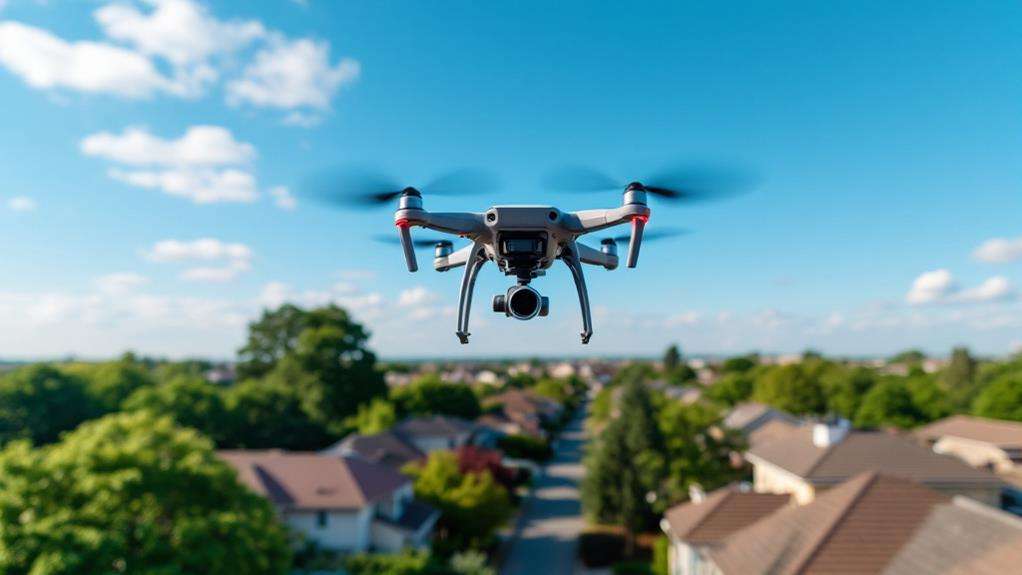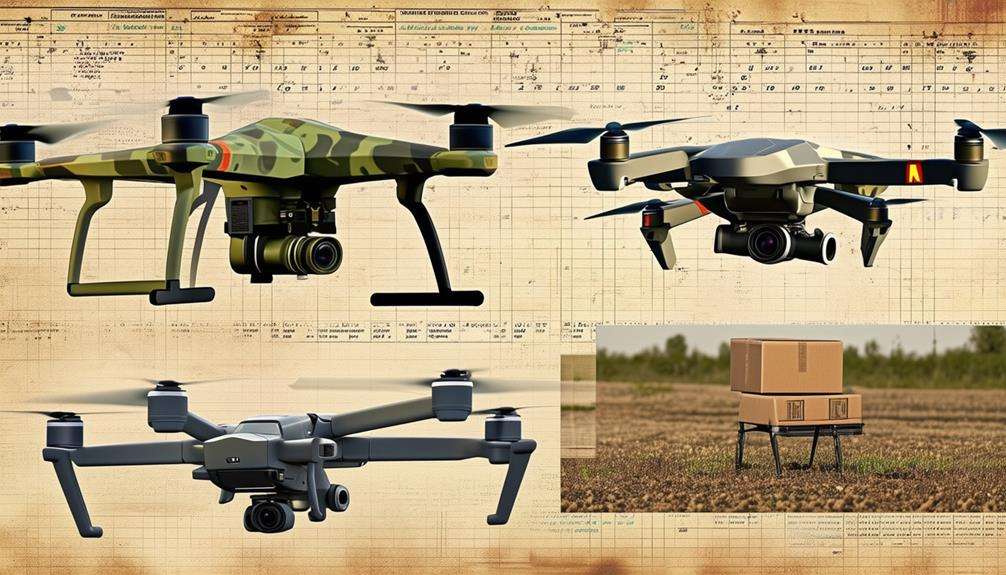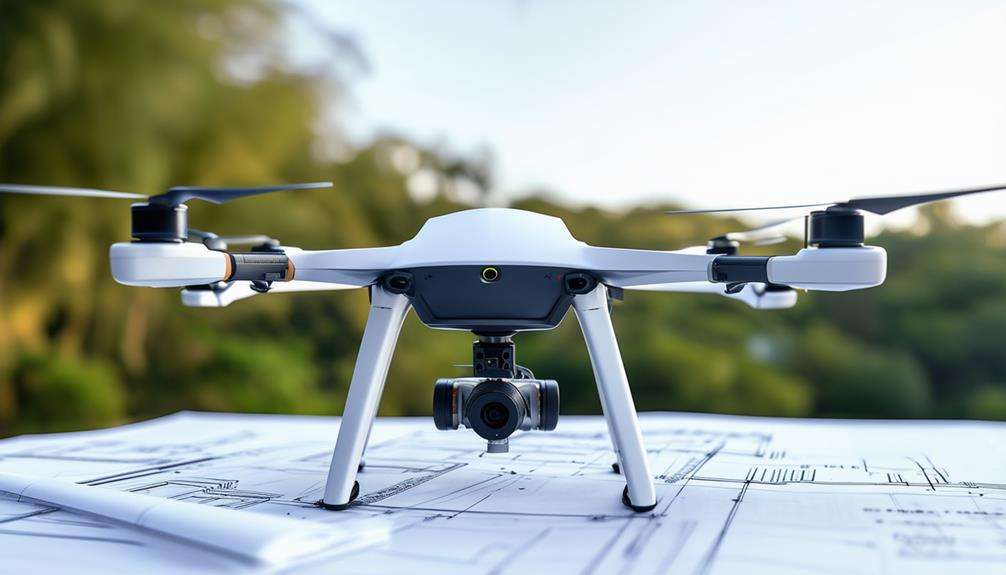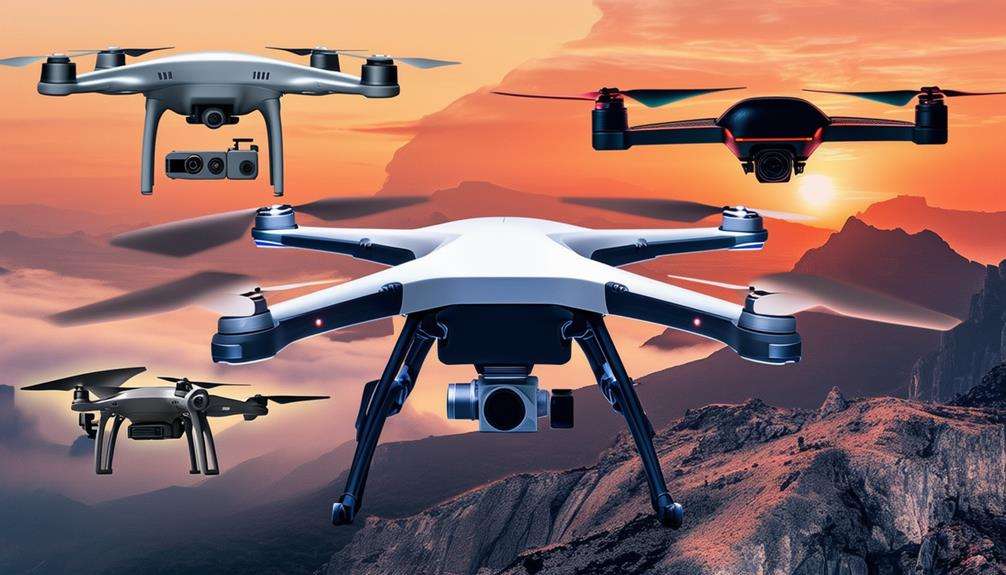The Evolution of Drones: Key Milestones Over the Decades
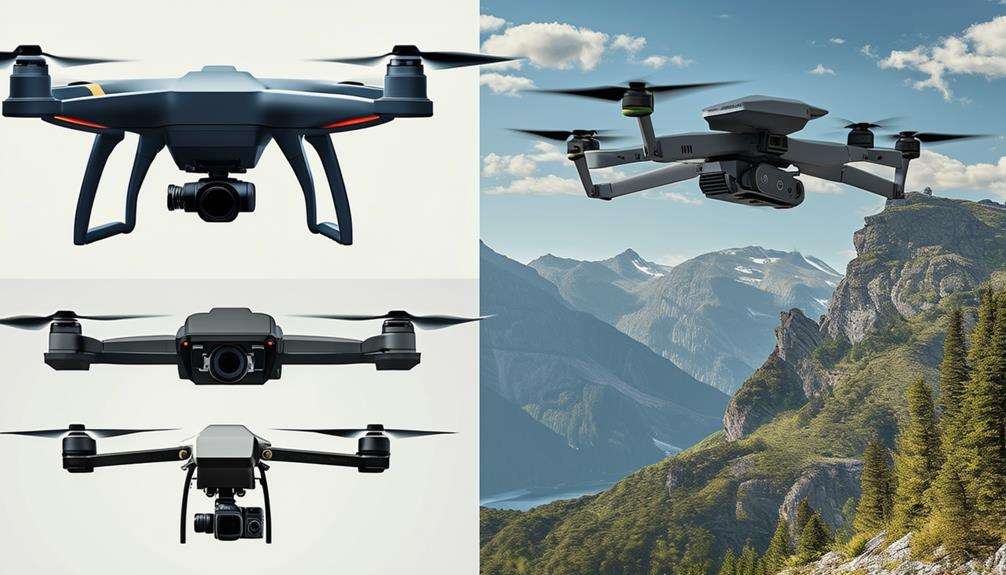
You're about to embark on the captivating evolution of drone technology, which has transformed remarkably since the early 20th century. Imagine the Bréguet brothers and Professor Charles Richet in 1907, crafting the initial quadcopter, a pivotal moment that set the stage for future advancements.
Fast forward to military innovations like the Ruston Proctor Aerial Target in 1917 and the Predator drone, which revolutionized modern warfare. Consumer drones, brought to life by Parrot's AR Drone series and later enhanced by DJI's AI-driven features, have made drones more accessible and smarter. What other groundbreaking developments have shaped this technology?
Early Beginnings
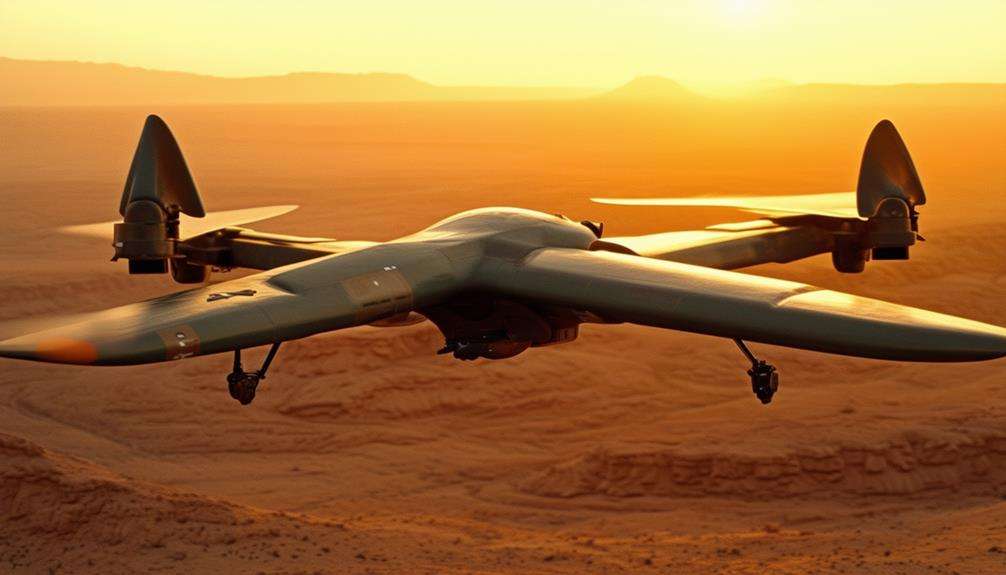
The evolution of drones began in 1907 when Jacques and Louis Bréguet, along with Professor Charles Richet, created the first quadcopter capable of vertical lift-off. Although this early model was unsteerable and required four men to stabilize it, the invention by the Bréguet brothers laid the groundwork for modern quadcopter designs.
By 1917, the development of the Ruston Proctor Aerial Target marked a significant advancement in drone technology. As the first pilotless winged aircraft, it inspired future military drones and captured the imagination of engineers and strategists, paving the way for further innovations.
In the early 1960s, the United States saw a surge in the popularity of radio-controlled planes, driven by advancements in transistor technology. This made remote-controlled aircraft more accessible to consumers, leading to a burgeoning market for consumer drones. The foundational work of Jacques and Louis Bréguet and Professor Richet began to bear fruit in this era of technological progress.
Military Adoption
Since the introduction of the Ruston Proctor Aerial Target in 1917, drones have significantly transformed military operations. Early innovations like the Kettering Bug demonstrated the potential of unmanned aircraft in combat scenarios. By the late 20th century, advancements in drone technology were epitomized by the Predator drone, renowned for its remote control capabilities and pivotal role in surveillance and reconnaissance missions.
The period following the September 11 attacks marked a significant milestone when the CIA deployed armed drones in Afghanistan. This era showcased the strategic benefits of armed drones, such as the MQ-9 Reaper, which enabled precision strikes while minimizing American casualties. The drive for more sophisticated unmanned aircraft capable of executing complex missions has continued to push the drone industry forward.
However, the deployment of armed drones has also sparked ethical debates, particularly concerning civilian casualties and accountability. Despite these controversies, the military's dependence on drones highlights their essential role in contemporary warfare and the ongoing evolution of unmanned aerial systems.
Vietnam War Innovations
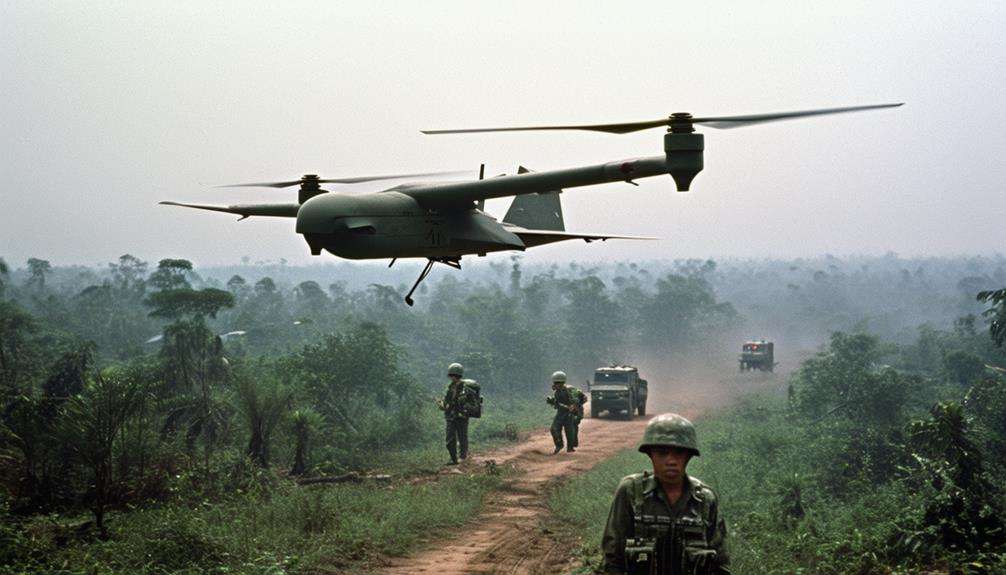
During the Vietnam War, the U.S. Air Force made significant advancements in drone technology to reduce pilot casualties and enhance surveillance capabilities. This period marked a pivotal point in the development of drone technology.
A notable innovation was the use of jet-powered bomber drones like the Karrar, which played critical roles in various military operations. These drones weren't only used for offensive actions but also excelled in gathering real-time intelligence crucial for mission success.
Surveillance drones became indispensable, providing military forces with real-time intelligence and situational awareness. This immediate data allowed commanders to make informed decisions swiftly, a decisive advantage in the complex environment of the Vietnam War. The classified nature of these drone missions underscored their strategic importance, making them vital assets in intelligence gathering and reconnaissance.
The progress in drone technology during the Vietnam War laid the groundwork for modern military applications. The innovations from this era not only saved lives but also set the stage for the sophisticated unmanned systems used today. Many of the advancements in contemporary drone technology have their origins in the Vietnam War period.
Rise of RC Planes
Imagine the excitement of the 1960s when transistor technology made RC planes more accessible to hobbyists. These advancements led to a surge in popularity, enabling enthusiasts to explore the skies.
As affordability increased, this era set the stage for the future consumer drone market, transforming our understanding of unmanned aerial vehicles.
Early Hobbyist Beginnings
In the 1960s, advancements in transistor technology led to the miniaturization of radio-controlled (RC) components, making RC planes a popular hobby. This innovation laid the groundwork for the consumer drone industry. The smaller, more manageable RC planes became more accessible and affordable, contributing significantly to their widespread adoption.
As RC planes gained popularity, they marked the early stages of what would evolve into the thriving consumer drone market we see today. Enthusiasts formed a growing community, experimenting with various sizes and designs of RC planes. This era of accessible technology inspired many to explore the potential of remote-controlled flight.
The rise of RC planes in the 1960s wasn't just a passing trend; it established the foundation for the consumer drone industry. By making these early flying machines available to the masses, hobbyists paved the way for future advancements, creating new opportunities for both enthusiasts and businesses in the drone world.
Technological Advancements
Advancements in transistor technology during the 1960s revolutionized radio-controlled (RC) planes by making their components smaller and more efficient. This miniaturization allowed hobbyists to explore more nimble and responsive RC planes, rapidly increasing their popularity across the U.S. The newfound affordability of these planes enabled broader participation, creating a burgeoning market for consumer drones.
These technological advancements were crucial in laying the groundwork for the modern consumer drone industry. Improvements in RC plane technology paved the way for more complex unmanned aerial vehicles (UAVs) with enhanced capabilities and broader applications. The commercial sector also began to recognize the potential of these advancements, seeing opportunities for various uses beyond hobbyist enjoyment.
The rise of RC planes fostered a community of enthusiasts and innovators eager to push the boundaries of what was possible. This period marked a significant milestone in drone technology, as increased accessibility and affordability spurred interest and innovation. The 1960s undeniably set the foundation for the diverse and dynamic world of drones as we know it today.
Mainstream Popularity Surge
The rapid rise of RC planes in the 1960s captured the imagination of hobbyists across the U.S., largely due to advancements in transistor technology that miniaturized radio-controlled components. This made RC planes more accessible and affordable, broadening their appeal.
The market saw an influx of various RC plane models and sizes, catering to diverse preferences and playing a crucial role in their mainstream popularity. This widespread interest laid the groundwork for the burgeoning consumer drone industry. Hobbyists, once limited by high costs, now found themselves part of a growing community.
As RC planes continued to captivate enthusiasts, a market for consumer drones began to take shape, paving the way for significant advancements in drone technology.
The initial surge in RC plane popularity in the 1960s didn't just remain a hobby; it set the stage for modern drone applications, from aerial photography to delivery services. The mainstream popularity of RC planes has had a lasting impact on the evolution of drones.
Birth of Consumer Drones
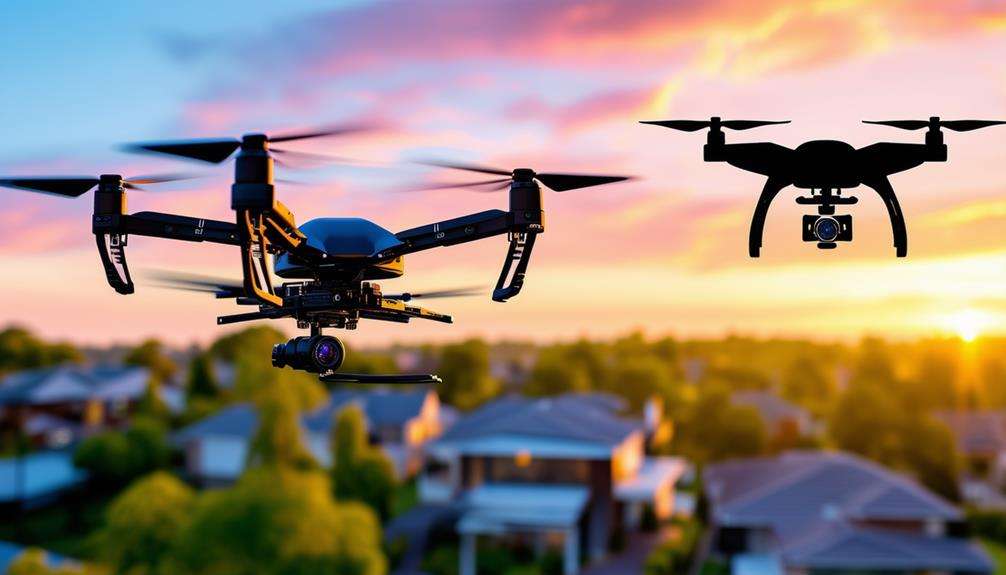
In 2010, Parrot revolutionized the market by releasing the AR Drone, the first ready-to-fly consumer drone controlled via Wi-Fi. This pioneering product made consumer drones more accessible with its user-friendly interface and marked a significant shift in drone technology. The AR Drone's success was highlighted by winning the 2010 CES Innovations award for Electronic Gaming Hardware.
The release of the AR Drone 2.0 in 2012 further enhanced the user experience with advanced stabilization technology, gaining critical acclaim and making it even more user-friendly. These advancements in Parrot's consumer drones paved the way for a new era of accessible and innovative drone applications, enabling hobbyists and tech enthusiasts to explore drone technology without requiring specialized skills.
| Year | Milestone |
|---|---|
| 2010 | Parrot released the AR Drone |
| 2010 | AR Drone won CES Innovations award |
| 2012 | Launch of AR Drone 2.0 |
| 2012 | Improved stabilization and user experience |
| 2010s | Rise of consumer-friendly drone applications |
Drone Regulations
When considering drone regulations, it's clear how early challenges influenced today's compliance standards. The FAA's initial commercial permits in 2006 opened new possibilities but also introduced regulatory hurdles. Modern standards have since evolved, facilitating the seamless integration of drones into various industries.
Early Regulatory Challenges
The issuance of the initial commercial drone permits by the FAA in 2006 marked the beginning of significant regulatory challenges for the emerging drone industry. This regulatory milestone expanded the applications of drones beyond military and consumer use, enabling companies and professionals to legally utilize drones for various business ventures and services.
However, early regulations posed numerous difficulties as stakeholders navigated the newly established legal framework. The FAA's regulatory changes were both pivotal and challenging. While they opened up new opportunities for integrating drone technology into different sectors, they also introduced complex compliance requirements. Businesses had to adapt quickly to meet all legal standards, often leading to delays and additional costs.
Despite these hurdles, the commercial drone industry experienced significant growth. The issuance of commercial drone permits marked the beginning of a transformative period, driving innovation and investment. As regulatory challenges were addressed, businesses found more efficient ways to integrate drones into their operations, leading to broader acceptance and utilization. These early regulatory milestones were essential in shaping the future of the commercial drone landscape, setting the stage for more advanced and nuanced regulations in the years to come.
Modern Compliance Standards
Since the early regulatory challenges, modern compliance standards like the FAA's Part 107 regulations have streamlined commercial drone operations. These regulations require operators to pass a knowledge test and register their aircraft, simplifying the legal landscape for commercial drone use. By obtaining a Remote Pilot Certificate, you ensure adherence to FAA regulations and operational rules aimed at safety and efficiency.
Part 107 regulations mandate maintaining a line of sight with your drone during operation, meaning you must keep the drone within your visual field at all times to prevent accidents and ensure safe navigation. Additionally, you must comply with specific airspace restrictions, such as avoiding no-fly zones and adhering to altitude limits.
To comply with these standards, you must operate your drone only during daylight or civil twilight hours, provided visibility conditions are appropriate. These regulations ensure you can see and avoid obstacles and other aircraft, contributing to a safer and more regulated airspace for all drone operations.
AI and Smart Features
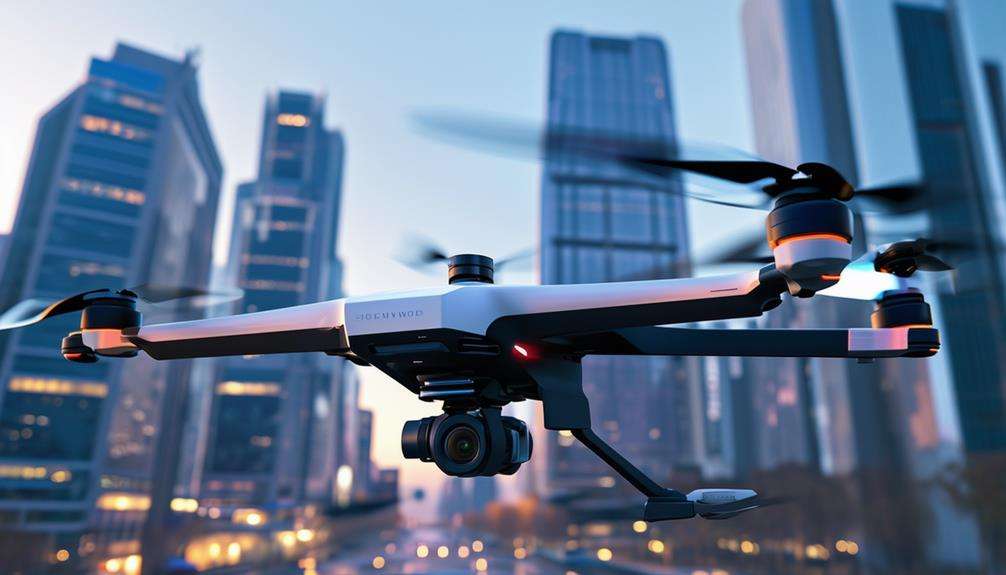
AI and smart features have transformed drones into intelligent, user-friendly devices capable of autonomous flight and advanced functionalities. The introduction of AI in consumer drones, particularly with the DJI Phantom 4 in 2016, marked a significant leap in drone technology. This model set new standards by integrating smart features like obstacle avoidance and intelligent tracking, making drones more accessible and intuitive to control.
With AI integration, the DJI Phantom 4 utilized machine learning to significantly improve user experience. Its computer vision system allowed it to detect and avoid obstacles autonomously, ensuring safer and more efficient flights. Intelligent tracking features enabled the drone to follow moving subjects seamlessly, revolutionizing aerial photography and videography for hobbyists and professionals alike.
These advancements in smart features didn't just make drones smarter; they made them more user-friendly. AI allowed for more precise control and automated functions, reducing the learning curve for new users. As a result, consumer drones became more popular and widely adopted.
The DJI Phantom 4's impact on drone technology exemplifies how AI and machine learning have shaped the evolution of drones, making them indispensable tools for a wide range of applications.
Modern Commercial Drones
Leveraging advancements in AI and smart features, modern commercial drones have become vital tools across various industries, providing innovative solutions to complex challenges. Since the FAA issued the first commercial drone permits in 2006, the industry has experienced remarkable growth, paving the way for non-military applications and diverse business opportunities. Today, drones are extensively used in sectors such as disaster relief, security, infrastructure inspection, and goods delivery, showcasing their versatility and efficiency.
A significant area of expansion is the global medical drone market, where drones now deliver medical supplies to remote regions, significantly improving healthcare access and response times. This underscores the expanding scope of commercial drone applications.
The growth of the commercial drone industry exemplifies ongoing innovation and increasing demand for these versatile tools. As technology continues to advance, the potential for new and improved applications rises, solidifying the role of modern commercial drones in addressing complex challenges across various industries.
Conclusion
You've just explored the fascinating evolution of drones, from the Bréguet brothers' early quadcopter to today's sophisticated AI-driven models. Drones have undeniably transformed both military operations and consumer technology.
As regulations adapt and technology advances, the potential for drones appears boundless. Whether you're a hobbyist or a professional, the future of drones promises even more innovation and exciting possibilities. So, keep an eye on the skies—there's much more to come!

